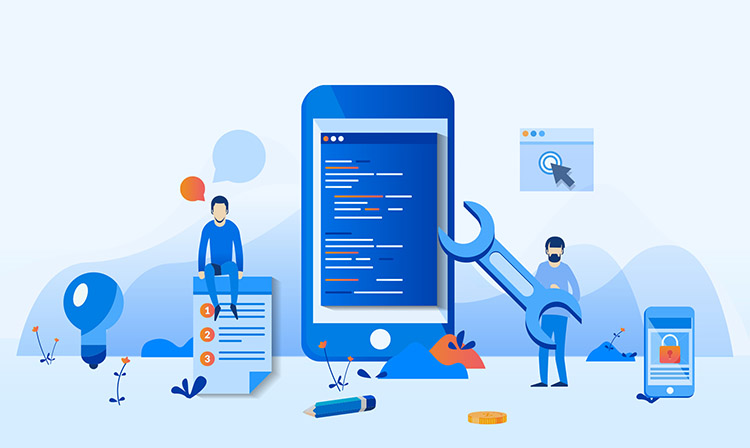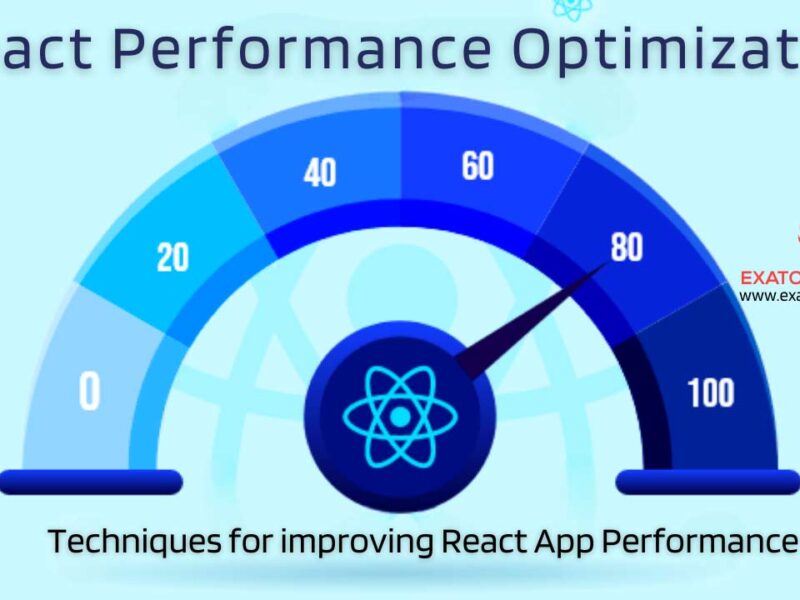Mobile app development will see a massive change with technological development that will allow Apps to run on different platforms. Today you can get Apps that will run on mobile, tablets, and even on PCs with cross-platform technologies for App development like React Native, and Flutter. People are spending more and more time on mobile phones, largely due to Apps, you have Apps for gaming, purchasing, home services, and whatnot. Today a well-designed application that runs irrespective of OS or screen size is no less than a shortcut for a successful business. Here we will find out how you can get an App developed that fulfills your business objectives and does not cost too much.
Impact of Mobile Apps
There are over 3.5 billion smartphone users worldwide, so there is no doubt that the industry is healthy and thriving. Stats are growing steadily, without any indications of slowing down. And studies show that an average person checks their phone at least once every twelve minutes, and over 10% of these people check their phone about every four minutes. There are some more statistics to keep in mind.
People spend over half of the time they spend with digital media on mobile.
Smartphone users spend 90% of their screen-on time using mobile apps.
Over 85% of consumers prefer native apps over mobile cross websites.
Revenue from mobile apps is set to cross $693 billion in 2021.
The average consumer has over 30 apps installed on their device.
An average user spends about 35 hours per month using mobile apps.
The statistics are motivating for anyone who wishes to build or develop a mobile app. But before we jump to any conclusions, let’s understand the exact process for mobile app development. Although it sounds very lucrative to build a mobile app to get a piece of the billion-dollar pie, the decision needs thought strategy, and planning. The fact also states that your app will be competing with over 1.5 million applications on the Google Play Store and Apple’s App Store.
Get acquainted with Mobile App Development?
Mobile app development is a process for building mobile applications that run on mobile devices. These applications can either be pre-installed or downloaded and installed by the user later. They use the network capabilities of the device to work computing resources remotely. Hence, the mobile app development process requires creating software that can be installed on the device, and enabling backend services for data access through APIs, and testing the application on target devices.
To develop scalable mobile apps, you also need to consider screen sizes, hardware requirements, and many other aspects of the app development process. With an increasing number of jobs in the mobile app development industry, it is essential that the process is well defined and understood by entrepreneurs, startups, and especially developers.
Mobile App Development Platforms
The two most important mobile app platforms are iOS from Apple Inc. and Android from Google. iOS is Apple’s proprietary mobile operating system built specifically for iPhones. Android, however, runs on mobile devices manufactured by various OEMs, including Google.
While there are many similarities between the two, however different software development kits (SDKs) are used for different platforms. Apple uses iOS exclusively for their own devices, while Google has made Android available for other companies that meet specific requirements. Developers have built over 1.5 million applications for both platforms to date.
Available Options for Developing Mobile Apps
There are advantages and disadvantages to building an application, no matter which approach you choose. By choosing an approach that matches your strategy, you can achieve the desired user experience, avail computing resources, and build native features required for your application.
Choose the Most Suitable Option for App Development
Native applications are built using the tools and SDKs offered by platform owners like Apple and Google. These apps run natively on the platform of your choice. Cross-platform mobile applications can be written on various programming languages and then compiled for each platform separately. Hybrid Applications are built using the latest web technologies like JavaScript, CSS, HTML, and then bundled as mobile applications for the required platforms. Hybrid Apps are different from Cross-Platform Apps in the sense that they work using web containers using browser runtime. Progressive Web Apps don’t require native or cross-platform development. They skip the app store installations and also traditional app delivery channels. They work inside the browser, whether it be mobile or desktop. A link is added to the mobile in the form of an app icon. These are basically web applications that also run on mobile.
Directly use the platform’s data through platform-specific SDKs. A unified user experience can be offered even for different platforms. Web development tools can be used to build mobile applications. No need to install the app. Runs through a browser on URL using the network connection.
The cost of building and maintaining different codes for each platform is high. Since native libraries are not available, the dependency is on third-party open-source libraries. The performance is not native, as essentially, they are built using technologies for web development. Little or no support for native devices. Runs using the browser’s capabilities.
Features have to be implemented differently based on the platform’s SDK tools. The code is not written natively. Thus, it has to be complied with and bridged. Which can be bugging. Little or no support for native devices. If the network connection is not available, interactivity is lost to a great extent.
Why Choose Native App Development?
Choosing native app development helps when you want to use native capabilities offered by the platform. Native apps can access the hardware capabilities of the devices like GPS, camera, microphone, which helps in quicker execution of features making it easier to build a rich user experience.
Push notifications are much easier to implement on native development. For example, push notifications to go through iOS Server (APNS) and Google’s Cloud Messaging Platform. Native apps have fewer bugs, as the code is compiled in the native language.
Why Choose Cross-Platform App Development?
The market is divided about 50-50 between iOS and Android. Your potential customer could be on any of the platforms, and sometimes on both. Building separate apps for both platforms requires an adequate budget, and not all companies have that. Moreover, developing native platforms can make it harder to offer the same amount of speed and functionality required by your app.
Choose cross-platform development if you wish to align the user experience across all the platforms; you wish to have one development team publishing for both the platforms; and you don’t have the budget and time to build and maintain two different apps separately.
Why Choose Progressive Web App Development?
Progressive Web Applications (PWAs) are written in traditional web languages like Javascript, HTML5, CSS, and such. These apps are only accessible through the browser of your device. So, choose to develop a PWA if your user will have uninterrupted access to network connectivity, and they can solve their issues through the browser itself, without requiring any native capabilities of the device like camera, machine learning module, GPS, gyroscope, and such.
With that in mind, let’s understand the mobile app development process step by step and get to know everything you need to follow a systematic mobile app development process to build your next great app.
The Process
To build an application, you need a step-by-step process that can help you build mobile apps quickly. There are three important steps:
Understand the requirement
Develop the Product
Test the product.
Work Out an Efficient App Development Strategy
The first step in the mobile app development process is to create a strategy by defining why? What is the objective of your app? How will your mobile app solve an industry problem? What is your business model? How much are you ready to invest in building this app? What is your revenue model? How will you market your app, and to who? Answering these questions will give you a fair idea of how you can move forward with your mobile app development process.
You can start by defining the user persona. For example, suppose you are planning to build an eCommerce app. In that case, you will define your user persona by understanding your users age, their mobile usage habits, and their preference, and specifically answering why and how they will find your mobile app users. Based on this, you can create an MVP (Minimum Viable Product).
To build an effective strategy, you will have to do some of the following things:
Brainstorm your app idea
Building a mobile app starts with an app idea. However, you require an extensive amount of brainstorming to develop an ultimate list of features you can offer your customers. You can start with the essential elements and note down other lesser crucial features as they are revealed to you. Who knows, you might surprise yourself with ideas you never knew you could implement. Sit together with your team, and ask them for all the ideas they can come up with.
Market Research, Mobile App Development Tech Stack
Before you start, here are some questions you can ask yourself:
Who is your target audience?
How will your customers use the application?
Are there any better alternatives already available?
What will your application do that other applications won’t?
What business model are your customers following?
What language, frameworks, and technologies will you use?
How many uses are paying for your type of mobile application?
What is your budget?
How long will it take to build your application?
Define your Minimum Viable Product
Once you are clear about all the functionalities you can include, the functionalities your users will like to use from the start, you define what your minimum viable product would look like. A minimum viable product is the version of your app that has enough features to put it in front of your early customers so that you can receive feedback on product features and further development.
You build a minimum viable product for the following reasons:
Test the product market using minimum resources
Get investors to see the vision behind your app
Quickly learn what works and what doesn’t
Waste minimum engineering hours
Get the product in front of early customers fast
Use it as a base to build other products
Test developer’s ability to build and scale product
Key elements of a minimum viable product (MVP)
Functionality – offer clear value to the users
Design-build minimal but highest quality standard design
Reliability – make the production quality top notch
Usability – make the user experience intuitive and refined
With a clear strategy in mind, you will be able to focus on your app development idea. Building a mobile app development strategy will help you analyze and plan the direction of further progress. MVP will help you add or strike out the options that work or do not work for you. With a complete precise picture of the App in mind, you can choose how you are going to get the App developed, with an in-house team or outsourcing. In the modern world, outsourcing is the most popular way of getting Apps developed as you get the benefit of the experience and expertise of a software team who have already worked for many clients.
Most organizations or people fail to get their idea turned into reality because of poor planning. With a planned effort you can certainly showcase your idea to the world and grow with it.



